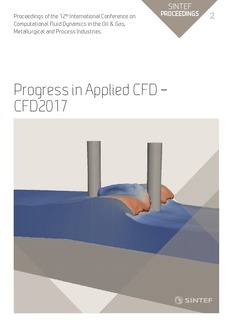| dc.description.abstract | The ability to predict the behaviour of multiphase flows accurately, reliably, and efficiently addresses a major challenge of global economic, scientific, and societal importance. These flows are central to virtually every processing and manufacturing technology. Significant advances have been made in the numerical methods to simulate these flows; examples of these include the use of Large Eddy Simulations to simulate turbulence, and interfacecapturing or tracking techniques to deal with the free surface. These codes have made progress in simulating the interaction of a turbulent flow field with an interface, however, there remains a large gap between what is achievable computationally and ‘real-life’ systems. We will present the latest on the modelling framework that we are currently developing within the Multi-scale Examination of MultiPHase physIcs in flowS (MEMPHIS) programme that will enable the use of numerical simulations as a reliable design tool. The framework features Front-Tracking/Level-Set hybrids, an Immersed Boundary approach to Fluid-Structure Interaction and sophisticated multi-scale, multi-physics models. The code we call BLUE is fully parallelised and can run on various platforms: from laptops to supercomputers (on over 250,000 cores). This allows the user the flexibility to choose between a quick ‘answer’ with a degree of uncertainty common to engineering applications or a high-fidelity solution, for targeted cases, that requires more time. BLUE also has builtin, user-friendly meshing capabilities that allow rapid construction of complex geometries. We present a number of simulations of problems of interest to process industries and biomedical applications, which include the design of container-filling processes, two-fluid mixing with a rotating impeller, high-speed atomization, microfluidic droplet encapsulation, falling film reactors featuring non-Newtonian fluids, and surfactant-driven non-isothermal flows. | nb_NO |
